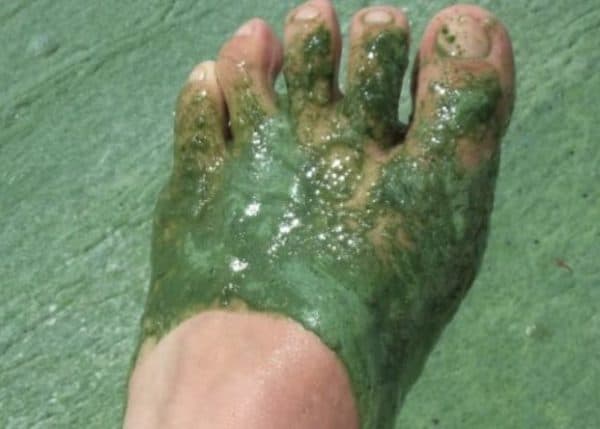Toxic algae a big problem in Canada and the United States

 With summer kicking into high gear, concerns over toxic algae in North America’s lakes and rivers is also ramping up.
With summer kicking into high gear, concerns over toxic algae in North America’s lakes and rivers is also ramping up.
The World Wildlife Fund Canada has released a scathing report on the state of Canada’s 25 major freshwater ecosystems, saying that too little is known about the overall health of Canada’s fresh water supply, including a concerning lack of data on water quality deterioration in Canada’s lakes caused by blue-green algae. And in the United States the Centers for Disease Control and Prevention (CDC) has launched a new website urging state and local health departments to monitor and report on blue-green algae blooms, an increasingly common problem caused by farming practices, wastewater runoff as well as the effects of climate change.
The WWF-Canada’s watershed report titled, “Taking the Pulse of Canada’s Rivers,” argues that not enough data is available to properly assess the health of Canada’s fresh water supply, held to be Canada’s “most important natural resource,” according to a 2016 Canadian Water Attitudes study.
“Canada’s commitment to freshwater stewardship, conservation and science-based decision-making is now a national priority,” says Elizabeth Hendriks, vice-president of freshwater conservation at WWF-Canada. “But we can’t act unless we first know what the problems are, and how they’re being made worse.”
Toxic algae blooms can cause respiratory problems
The CDC also cites a lack of information on where blue-green algae presents the biggest challenges across the U.S. as the impetus for the call for more reporting on algae blooms, which contain harmful toxins that can cause respiratory problems, skin rashes and illness from eating fish or shellfish or drinking tap water contaminated with the toxins.
“We don’t have a lot of data to really pinpoint where across the country that this is the biggest issue,” CDC epidemiologist Virginia Roberts says. “So this system will be able to collect information that will inform our understanding of where blooms occur, how frequently they occur and whether they’re more or less of a problem over time.”
The U.S. National Oceanic and Atmospheric Administration reported that 2015 was the worst year on record for algae blooms in Lake Erie, where the slimy scum which can look like thick green paint covered 300 square miles in early and mid-August last year, staying roughly in the middle of the lake between Ontario and Ohio.
An algae advisory was recently issued for Eagle Lake, east of Calgary, warning people to avoid all contact with the blooms, avoid swimming or wading (or allowing pets to swim) in any areas where blue-green algae is visible. Alberta Health Services warns that boiling the water does not remove the toxins and that contaminated water will often give off a musty or grassy smell.
Climate change may be creating a more habitable environment for toxic algae
A recent study found that waters off the coast of BC have become more habitable for algae blooms, most likely due to climate change. Researchers studied the carcasses of Alaskan mammals including seals and whales to track the presence of domoic acid and saxotoxin, two algae-produced toxins found in animals along the southern U.S. Pacific coast but until now not known north of California. Of the 13 species examined, domoic acid was found in all of them and saxotoxin in ten.
“This tells us the risk is there,” says Kathi Lefebvre with National Oceanic and Atmospheric Administration. “They may not be in high enough concentrations yet to cause health impacts, but our question is what does the future hold in terms of increasing algae blooms as the waters warm?” Studies have shown that temperatures in Alaskan waters have gone up by almost three degrees over the last decade.

